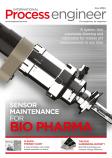Mikko Urho discusses applying automation to all aspects of manufacturing
The tasks on the factory floor that once were the responsibility of humans have increasingly been taken over by robots. By next year, there will be a record 518,000 projected industrial robot installations worldwide. Manufacturers have fully embraced robotic deployments to complete cutting, welding, assembly and other processes to achieve automated production of items and remove the repetition for factory floor staff.
However, while robots have brought automation to the production line, there are still elements of manual work that engineers need to complete when deploying and maintaining them. Take for example the automotive industry. A car can be composed of as many as 30,000 different components, all delivered to the factory as a mixture of discrete parts and assemblies. Engineers will only be too aware of the different applications that multiple robots need to carry out to meld these elements together and create the final product. It’s now essential that automation is incorporated into robot deployment and maintenance to support engineers in their work, while ensuring the sector’s commitment to Industry 5.0 practices.
Moving away from manual processes
Bringing robots in to the manufacturing floor is a sure-fire way to achieve fast, accurate and repeatable processes, but each deployment must be manually programmed to provide that benefit. Unfortunately, engineers face a heavy workload as technology skills shortages continue and sufficiently trained professionals come at a premium.
It’s also a commonplace practice to either move behind safety lines to physically program heavy and potentially dangerous equipment or even climb ladders in high up positions to complete the process. It can, in many cases, take several weeks to fully program the robot manually before it is ready to complete a task, leading to poor utilisation rates. Add the fact that there’s a plethora of robot brands, all with unique requirements, that can be incorporated onto one factory floor, and it’s a lot to manage.
The value of offline programming
This is where automation of robot programming comes into play. Robot offline programming (OLP) allows engineers to both plan and design a new robot work cell in a virtual environment. It’s a production-uninterrupted method of programming robots. Highly accurate simulations of processes and workflows allow engineers to evaluate trade-offs in real-time and make more efficient and cost-effective decisions, all from a remote location.
Take for example the welding of large metal pieces. The robot itself can weld tirelessly to the needed level of quality, and OLP can adapt that welding process to suit small batches, such as when products are tailor-made to the customer’s needs. The software effectively utilises the features of a 3D CAD model of a welded piece to ensure fast and error-free programming.
Applications and benefits
Automated programming via OLP means that the process can be completed without any disruption to production. Programming is completed concurrently as the robot is deployed, as opposed to sequentially. Less time is spent on preparation before launching a new product into production. A new item design can also be validated before being moved to the factory floor. A virtual sandbox with unlimited opportunities to make mistakes means that any robotic process can be refined to the most granular detail. Costly errors can be avoided, such as the robot not being able to reach a critical component.
Manufacturers can find that OLP deployment quickly leads to time savings and additional benefits. Cloning, multi-layer, automatic axes optimisation, vision system integration, templates and weld databases can allow for significant increases in productivity. It’s not uncommon to see manual programming human work hours reduced by as much as 80%, with a reduction from two weeks to just four days to get the robot fully ready to complete its task. Output of the final product can also double in many cases.
OLP can serve as one solution in a wider set of digital transformation technologies to encourage a truly automated factory environment. Layout design, feasibility and validation of control logics and processes can also be simulated and refined in a virtual environment to increase efficiencies and help upskill engineers entering the workplace.
An automated future
In the coming years, robotic investments will only escalate as manufacturers look to streamline their processes and truly benefit from automation across the entire factory floor. To ensure that they provide value from the moment of deployment and beyond, OLP programming is a vital tool for engineers to automate robot workflows and movements.
By leveraging technology from any location, engineers can allow different robot brands with different capabilities to complete complex processes such as cutting, welding and assembly with minimal downtime, all from a position of safety. Crucially, as skills shortages continue in the sector and some engineers fear being replaced in their jobs, solutions such as OLP will not supplant human expertise, but support workers via human-centric automation. People will play a central role in the entire production system lifecycle as digital innovations continue to transform the sector.
Mikko Urho is CEO of Visual Components


















